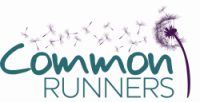MENOPAUSE – STEPS TO TAKE BEFORE STARTING HRT
In this fourth blog, Katia focuses on the menopause and looks at steps that we can take to support ourselves during this transition in two key areas – nutrition and exercise.
Menopause is thankfully now openly discussed and many of us are able to find evidence-based solutions and guidance from medical professionals. While HRT can be seen as a panacea and is often very effective, there are key steps that we should take prior to resorting to medication.
Menopause involves a significant change in the levels of certain hormones, including oestrogen and progesterone, but it is the peri-menopause which can start from 40 onwards that can be the most challenging stage for most of us. Numerous symptoms appear and these are highly variable from one woman to the next – the most common being our cycles becoming more erratic, weight gain, low mood, hot flushes, urinary issues and sexual disfunction.
It is important to remember that there is a lot that we can do to support ourselves during this transition in two key areas – nutrition and exercise.
THE IMPORTANCE OF NUTRITION
The importance of diet cannot be underestimated. We have to consider the estrobolome – a collection of essential bacteria in our gut microbiome which is capable of metabolising and modulating the body’s circulating oestrogen; it can recycle oestrogen which should have been excreted from the body and thereby increases the amount in circulation. A healthy and balanced estrobolome will assist in supporting the delicate balance of oestrogen in our bodies.
In order to optimise the health of our estrobolome, it is important to consume adequate fibre, polyphenols, fermented foods and probiotics in order to promote these bacteria species to alleviate menopausal symptoms.
Optimal foods include pulses, whole grains, nuts and seeds, fruits and vegetables, herbs & spices.
Phytoestrogens such as isoflavones are helpful in that they mimic the effects of oestrogen by binding to particular receptors in the body. Foods rich in isoflavones include soy products such as edamame and tofu.
Given the muscle loss at this stage in life, consuming adequate protein is key. Women should aim for 20-25mg of protein per meal. Omega-3 intake is very important for maintaining cognitive function, reducing risk of depression and reducing inflammation. Oily fish like salmon, sardines, and mackerel, as well as flax seeds contain omega 3.
Although intermittent fasting has many benefits, it is not advisable for women going through this transition. Recent research has shown that fasting for long periods can affect our hormone balance, creating greater fluctuations which then increase stress and cortisol levels. Reduced weight due to fasting may be due to a decrease in muscle mass which can worsen menopausal symptoms. Although long fasts are not recommended, snacking throughout the day and late into the night is not supportive of gut health.
Maintaining an eating window of 10-12 hours with your meals spaced out evenly is the best approach to balancing your hormones and minimising stress.
STRENGTH AND AEROBIC EXERCISES
Weight gain, especially around the midsection, is due to metabolic changes taking place which can lead to insulin resistance. This tends to coincide with reduced activity levels which reduces our muscle mass. These changes can be mitigated by strength and aerobic exercises which have been found to reduce hot flushes and improve bone density.
It’s good to establish a weekly exercise schedule that works with all your other commitments. Making sure to include two strength sessions, such as lifting weights or strength yoga/pilates, and two aerobic sessions such as running or stationary cycling. Joining an exercise class or a running group like Common Runners http://commonrunners.co.uk/ can be a great motivator.
Taking steps to optimise our diet and to incorporate exercise into our daily schedule is essential when it comes to managing symptoms during the peri-menopause, and this will help to support our health and wellbeing well into our post-menopausal years.
Katia is a Nutritional Therapist and gut health expert helping high achieving women to optimise their diets and restore their health so that they can live their lives to the full. Please follow her on Instagram @nutritionapplied or check out www.nutrition-applied.com



